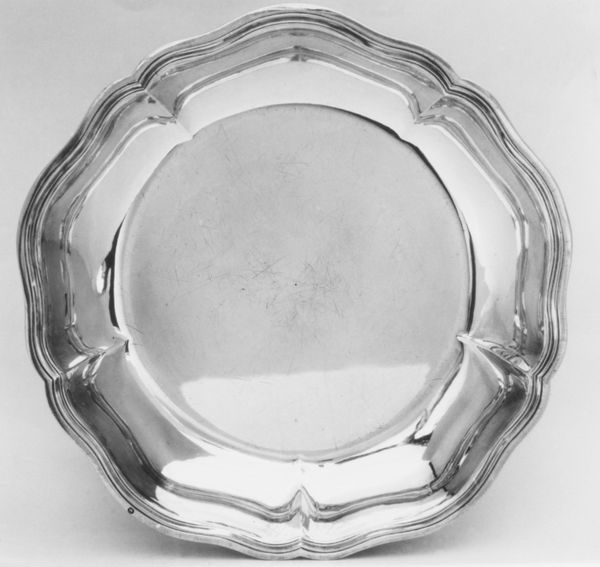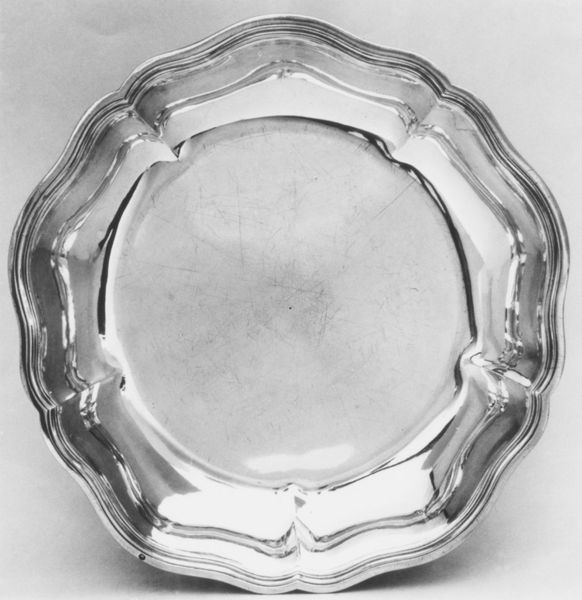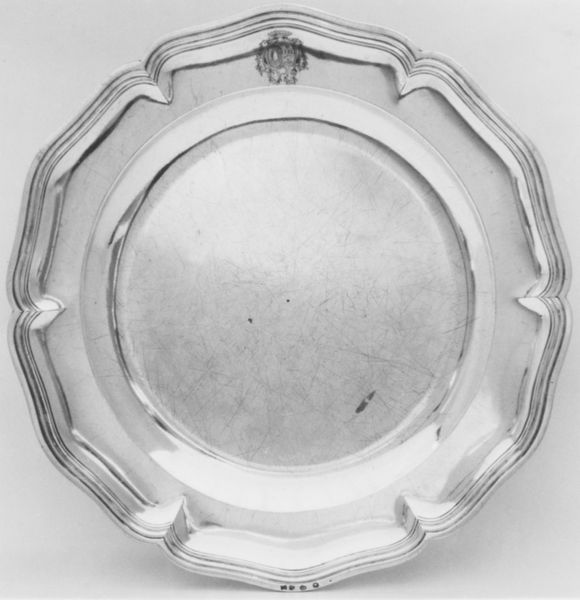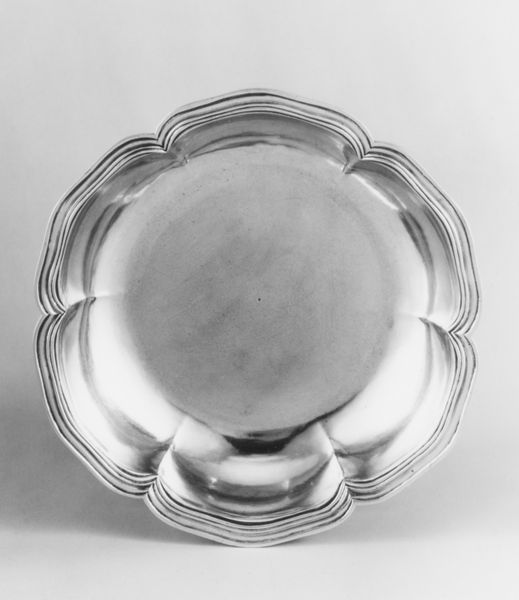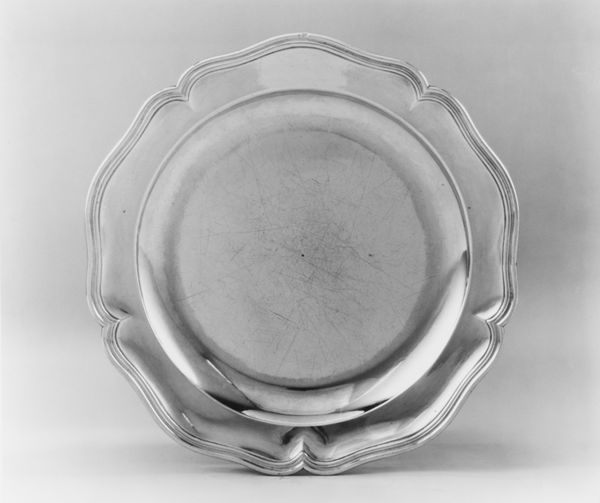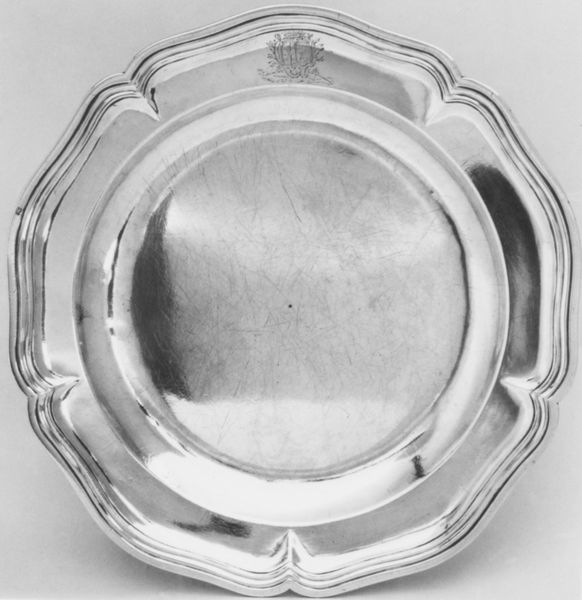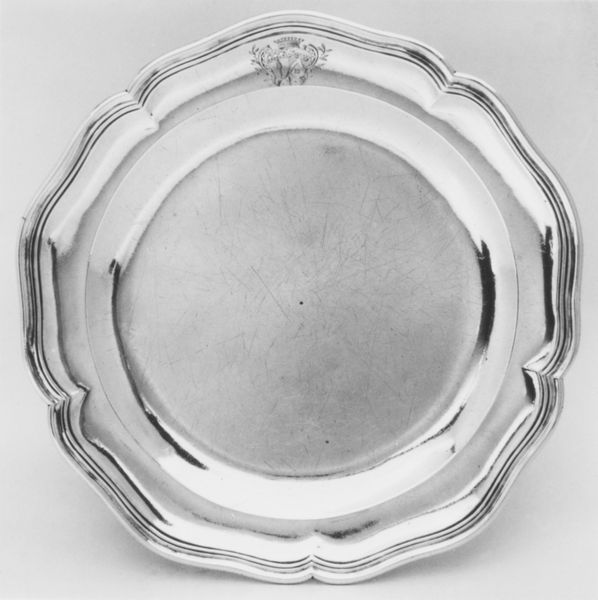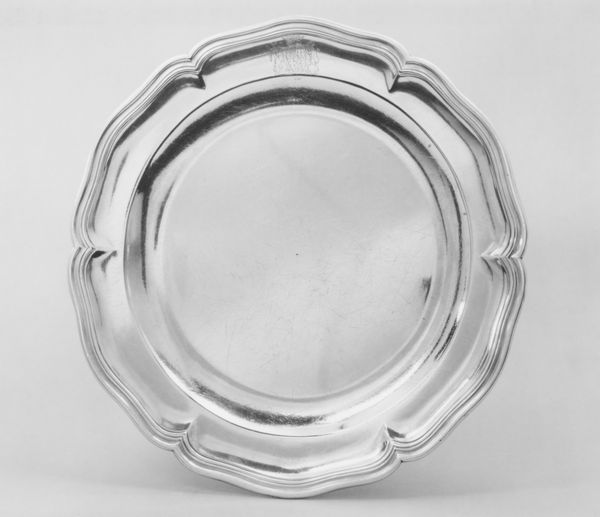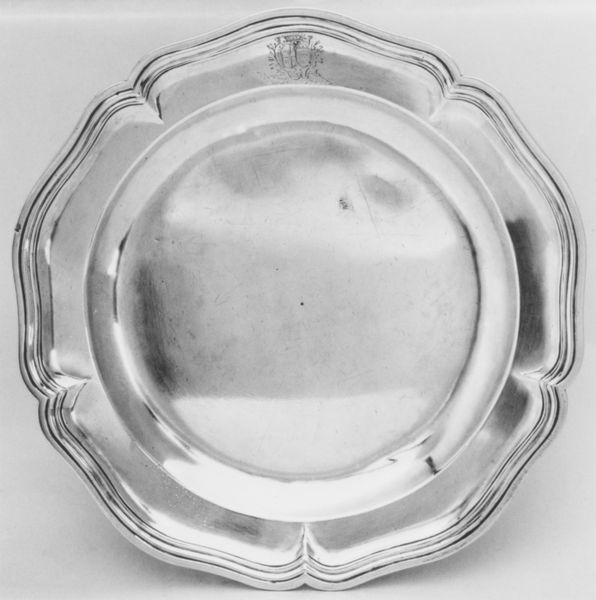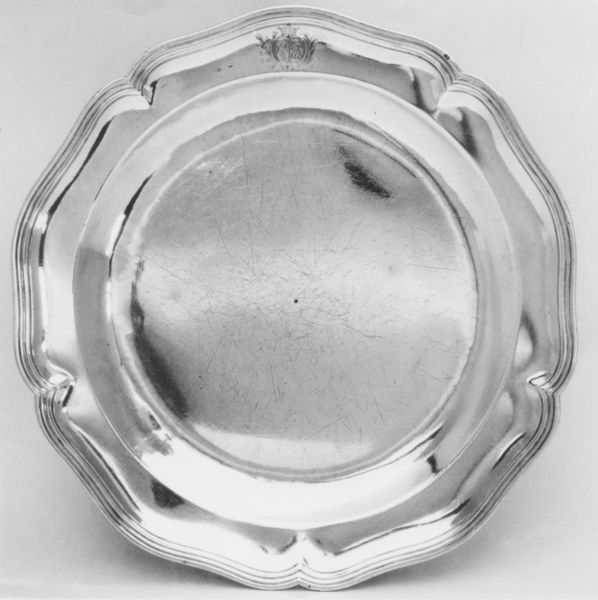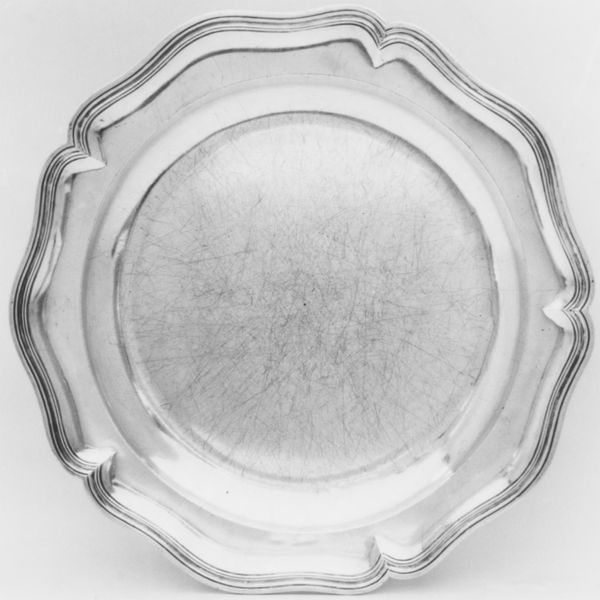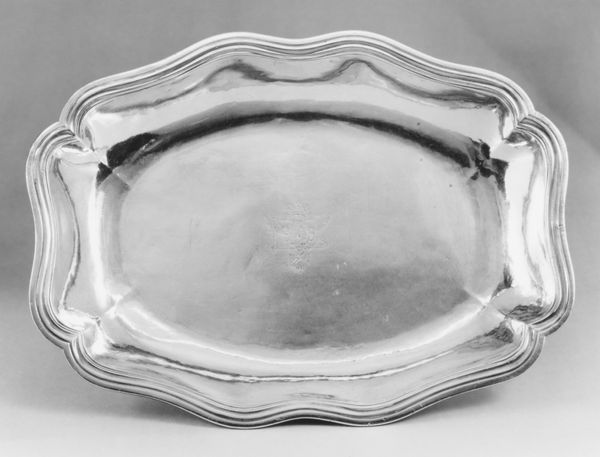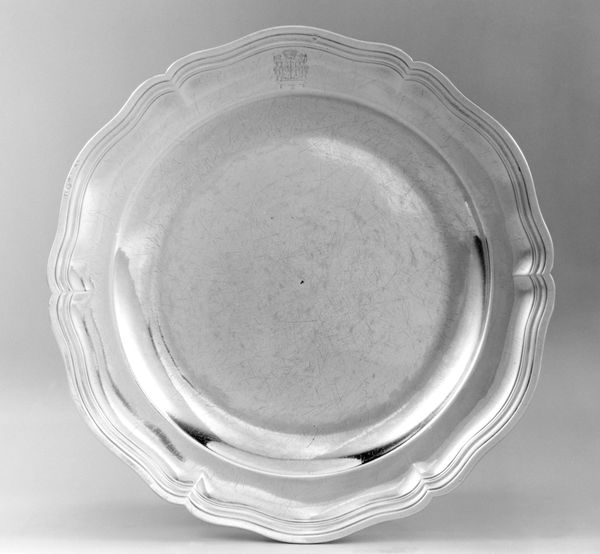
silver, metal, sculpture
#
silver
#
metal
#
sculpture
#
decorative-art
#
rococo
Dimensions: Overall: 1 3/8 × 10 in. (3.5 × 25.4 cm)
Copyright: Public Domain
Curator: Welcome. Before us is a silver dish created between 1760 and 1761 by Edme-Pierre Balzac, a master of the Rococo style. Its craftsmanship suggests it was intended for someone of considerable means. Editor: It strikes me as opulent yet strangely…restrained? The reflective surface, the simple form—it lacks the overt extravagance I typically associate with Rococo. There’s a sense of cultivated elegance here. Curator: Exactly! Balzac has mastered the spirit of the time while maintaining a classic sense of design. Rococo was a rebellion against the heavier baroque of the previous generations. A culture obsessed with surfaces—mirrors, candlelight—and this highly polished piece would interact with the ambient environment, becoming almost chameleon-like. Editor: Semiotically, the curves—repeated and emphasized in the scalloped edge—evoke fluidity and grace, almost as if the solid metal were water, caught in a perpetual state of movement. How does the symbolism tie in with dining, do you think? Curator: Silverware, throughout history, carries deep meaning. Think of a silver chalice, the holy grail even. This dish acts almost like a blank canvas. Ready to be filled, representing abundance, wealth, or more intimately, hospitality. The shine acts as a status symbol. Editor: So, this dish becomes more than just a functional object; it transforms into a symbolic stage upon which personal narratives are played out. Curator: Indeed, what we choose to place on it becomes part of that dialogue—reflecting societal values and perhaps individual desires, much of it determined by period expectation and court life. It continues to tell a story, long after its contents have disappeared. Editor: It's fascinating how an object, seemingly simple, can hold such a wealth of meaning. The interplay of material, form, and symbolism invites us to look beyond its function and into the cultural mindset of its time. I'm quite charmed. Curator: Yes, objects like these allow us a small intimate peek at a different time, place and sensibility. Balzac's "Dish" reminds us that art isn't confined to paintings or sculptures; it permeates our daily lives, enriching even the most common acts.
Comments
No comments
Be the first to comment and join the conversation on the ultimate creative platform.
